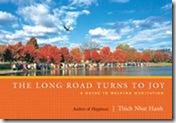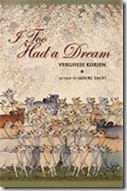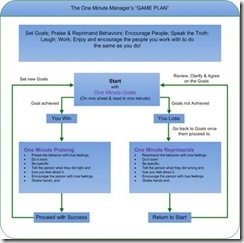Hi,
Hope you had a great week. It has been a great one for me too, with new orders for my services, new relationships - both on personal and professional front, and new ideas - a few big and some small, as they appear to be as of now. Overall, quite a satisfying week indeed, especially with a new perspective that took ground and formed a concrete shape in my mind. That is the concept of ‘Double-Win’ as I read through the book of “The Double Win” by Dr Denis Waitley, the internationally recognized authority on high-level performance and personal development who helped executives of over half of the Fortune 500 companies in the US.
Winning and also losing have been a part of almost everyone’s life. Each one of us has times in our life when we experienced the joy of winning and also the disappointment of losing. We watch on a daily basis on television the athletes and sports teams participating and playing, the winners celebrating their victory and the losers going through the agony of the loss. It appears that if one has to win, someone else has to lose. Be it a sport, a business transaction, or even in an argument at a personal level. We see people competing to win and comparing themselves with others. Competition is becoming tougher by the day and winning by all means, even at the expense of others, seems to be the most common tendency. And, that premise of ‘win-lose’ is being viewed by people as logical, rational, and nothing but natural. BUT, is it really so? Is it possible to win by creating and cooperation than by competing and comparison? Can the win-lose approach be replaced with a win-win attitude? Can the Double-win be applied to business and sports as well as family and personal relationships? Can we really get most out of life by actually giving the most to others? Denis believes we can. He explains it HOW in his book “The Double Win’. Let me share with you the notes I made from part I of his book this week and keep part II of it for the next week......
-----------------------------------------------------------------------------------------
The essence of Double-win in comparison with One-way win is presented below:
Notes for corporate companies on Double-win
Double winning is winning by shared values. In the work place, if employees see themselves as competent, valued, and important to the employer, they tend to respond with higher quality of goods and services provided to the customers, which results in higher profits for stakeholders. Everybody wins. Successful companies practice double-win in one way or the other.
-----------------------------------------------------------------------------------------
Denis tells in his book many Double-win stories of corporates, athletes, people, and families how they practised and demonstrated Double-win behaviour and became successful. While Double-win is not refraining from competition, it is more of giving one’s best in every act that one chooses to perform, and in the process helping others too to bring the best out of them. It can be practised in business, work, marriage, parenthood, family, and personal relationships.
In short, the win-win attitude according to Denis is, “I live every moment, enjoying the most, relating as much, doing as much, and giving as much as I can. I enjoy Double-win because it ensures victory for me and others.”
That’s it for now. Shall bring to you next week more from the same book, especially on the Profile of Double Winners, and HOW they win.
To your SUCCESS,
With love and regards,
Siva
value4value@gmail.com

Hope you had a great week. It has been a great one for me too, with new orders for my services, new relationships - both on personal and professional front, and new ideas - a few big and some small, as they appear to be as of now. Overall, quite a satisfying week indeed, especially with a new perspective that took ground and formed a concrete shape in my mind. That is the concept of ‘Double-Win’ as I read through the book of “The Double Win” by Dr Denis Waitley, the internationally recognized authority on high-level performance and personal development who helped executives of over half of the Fortune 500 companies in the US.
Winning and also losing have been a part of almost everyone’s life. Each one of us has times in our life when we experienced the joy of winning and also the disappointment of losing. We watch on a daily basis on television the athletes and sports teams participating and playing, the winners celebrating their victory and the losers going through the agony of the loss. It appears that if one has to win, someone else has to lose. Be it a sport, a business transaction, or even in an argument at a personal level. We see people competing to win and comparing themselves with others. Competition is becoming tougher by the day and winning by all means, even at the expense of others, seems to be the most common tendency. And, that premise of ‘win-lose’ is being viewed by people as logical, rational, and nothing but natural. BUT, is it really so? Is it possible to win by creating and cooperation than by competing and comparison? Can the win-lose approach be replaced with a win-win attitude? Can the Double-win be applied to business and sports as well as family and personal relationships? Can we really get most out of life by actually giving the most to others? Denis believes we can. He explains it HOW in his book “The Double Win’. Let me share with you the notes I made from part I of his book this week and keep part II of it for the next week......
-----------------------------------------------------------------------------------------
The essence of Double-win in comparison with One-way win is presented below:
One-way win
|
Double-Win
| |
| 1 | Winning by comparison, domination, arrogance or aggression | Winning by creating and cooperation Winning is taking the talent or potential you were born with and using it fully toward a goal or a purpose that makes you happy and simultaneously serves other people |
| 2 | Guided by ‘ethic of competition’ | Guided by ethic of creation |
| 3 | I win, you lose | If I help you win, I win, too. Success must become a two-way street. |
| 4 | For every winner, there is a loser | You don’t have to knock other people down to win. Every victory does not result in a defeat. |
| 5 | Win by all means. | Be all you can be. |
| Win-Lose model example Harold Geneen took over International Telephone and Telegraph when it was not doing well. He soon set up a competitive system of management; divided the company into many divisions that could compete with one another; Monthly reviews conducted; Division Managers had to present their reports and were subjected to ruthless interrogation by Geneen; Managers were reduced to tears under gruelling pressure. For many years, this win-loss management-by-stress approach paid off. ITT business grew more than ever. But, it led to stressful managers who strived not to be losers; sometimes even by practicing unethical practices that eventually led to the loss of image of the company in the public. | Win-Win model example Geneen’s replacement, Rand Araskog, followed a different approach. Reorganized hundreds of divisions into 4 main divisions; decentralized decision making up to the operating level; Done away with huge employee meetings and open employee dressing downs in front of the group; inspired employees by distributing a sense of responsibility; More tolerance for risk bearing, thus greater innovation; More acceptance of long-term success, thus greater persistence; More personal responsibility how the company performs, thus a work force that identifies personal achievement with the success of the firm. He has thus made ITT not only efficient but also sustainable |
Notes for corporate companies on Double-win
Double winning is winning by shared values. In the work place, if employees see themselves as competent, valued, and important to the employer, they tend to respond with higher quality of goods and services provided to the customers, which results in higher profits for stakeholders. Everybody wins. Successful companies practice double-win in one way or the other.
-----------------------------------------------------------------------------------------
Denis tells in his book many Double-win stories of corporates, athletes, people, and families how they practised and demonstrated Double-win behaviour and became successful. While Double-win is not refraining from competition, it is more of giving one’s best in every act that one chooses to perform, and in the process helping others too to bring the best out of them. It can be practised in business, work, marriage, parenthood, family, and personal relationships.
In short, the win-win attitude according to Denis is, “I live every moment, enjoying the most, relating as much, doing as much, and giving as much as I can. I enjoy Double-win because it ensures victory for me and others.”
That’s it for now. Shall bring to you next week more from the same book, especially on the Profile of Double Winners, and HOW they win.
To your SUCCESS,
With love and regards,
Siva
value4value@gmail.com












